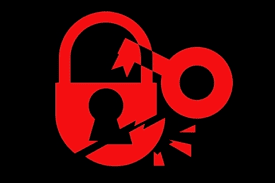The global pandemic is challenging the world to creatively and intelligently adapt to rapid change. People and organizations must define their new normal while adjusting to sweeping modifications such as social distancing and extensive remote work. For IT leaders, there is immense pressure to perform fantastic feats quickly. With as little as 24-hours-notice in some cases, organizations are asking IT to stand up comprehensive work-from-home programs, opening corporate networks to a wide range of new connections and sending corporate hardware out into the wild with little-to-no preparation.
These fast and drastic changes are pushing the collective IT community way beyond its comfort zone. Almost overnight, many of the controls and protocols that previously managed corporate security postures are being strained or exceeded. Attack surfaces are expanding exponentially in the blink of an eye.
Fortunately, we live in technological age where, believe it or not, this is manageable. There is a wealth of information and tools available to help IT find a more comfortable foothold while working to scale security and manage their rapidly expanding networks.
The best approach involves three main principles: Stay Informed and Vigilant, Plan to Scale and Sustain, and Properly Prioritize. Adhering to these guidelines can help organizations and IT teams of any size successfully navigate uncharted waters.
Stay Informed and Vigilant
The number of remote workers everywhere is growing. As organizations expand their remote workforce, they are opening themselves up to possible infections or breaches. Whether yours is an organization that has always practiced WFH policies or is enacting them for the first time, it’s important to know the common missteps that can create vulnerabilities. Some of these pitfalls are caused technologically, while others are the result of end user mistakes.
Technological missteps:
- Using unencrypted connections
- Poorly secured RDP
- Misconfigured VPN
- Bandwidth constraints
- Outdated, unpatched user software
End user missteps:
- Poor password protocol
- Using public WiFi
- Unencrypted data sharing
- Using poorly configured routers
- Falling victim to social cyberattacks such as phishing attacks
Regarding cyberattacks, it is common for malicious actors to ramp up their game during times of crisis. Sadly, we have already seen an alarming number of fraudulent websites and other resources using the COVID-19 topic to entice visitors.
Tip: It is considered a best practice to run regular, on-demand vulnerability and threat scans, especially when your network is rapidly changing and involves extensive BYOD.
Plan to Scale and Sustain
Because many organizations are facing quick ramp-up times, they’ve had to create manual process and supports that do not scale easily and will eventually become unsustainable. As the deployment dust begins to settle, it is important for IT organizations to examine recent measures and evaluate expansion or scale-down capabilities as well as automation opportunities. This is particularly crucial for maintenance and security processes as they are vital to the overall security posture of the organization.
Cloud security solutions are indispensable when it comes to adjusting scale. Their flexibility and agility make it possible for organizations to grow or shrink specific security functions as needed. This is particularly necessary during times of uncertainty.
SaaS solutions are ideal when it comes to automation. SaaS solutions use automation by nature and are tailor-made to automate business-critical functions. Automation is a best practice for many key security and maintenance functions, as it removes the fallibility introduced by manual processes. Additionally, SaaS solutions also facilitate workflow integrations as well as secure data sharing. These are essential capabilities when employing a remote workforce.
Tip: Identify security solutions that are cloud-native. Because they are built for the cloud and not retrofitted, they run faster, operate intuitively, and provide essential on-demand data access.
Properly Prioritize
There will be no shortage of tasks heaped up on IT departments in the coming months. Even before the recent changes, IT teams struggled to juggle competing priorities. This is especially true for small to medium business, though no organization is immune.
Among the most pressing needs are operational and security tasks. Often these tasks are weighted equally in importance, but not everything can be priority number one. It’s best to use comprehensive security tools to evaluate to-do lists from a number of angles and help provide well-rounded, informed prioritization. This ensures teams focus their efforts on the most pressing vulnerabilities and threats first, helping to secure systems efficiently, without unnecessary resource drain.
Tip: Look for a vulnerability management solution that offers comprehensive scanning, actionable results, and well-rounded rating criteria, to provide essential context for remediation prioritization.



